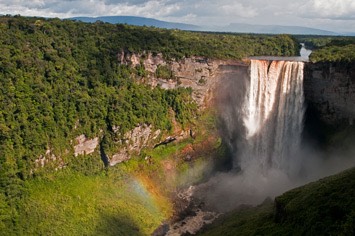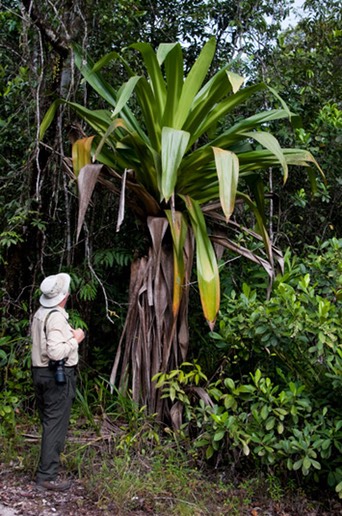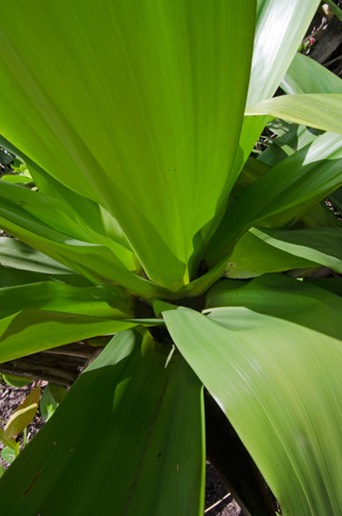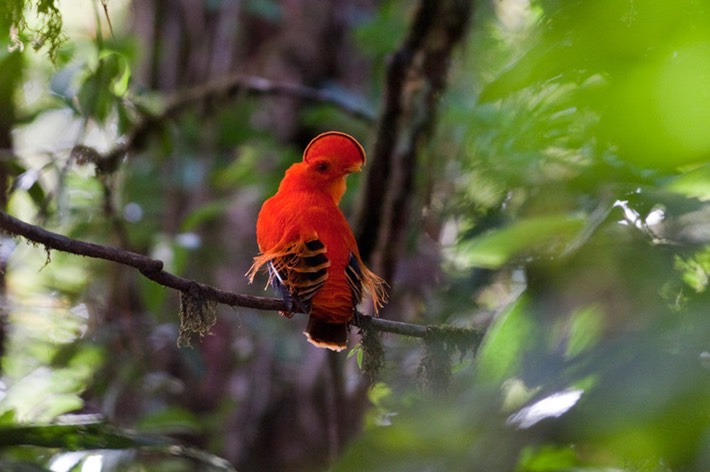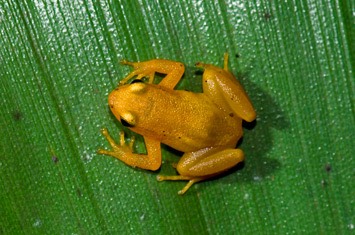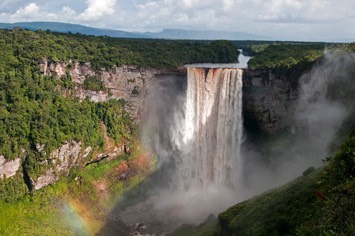
A long job off Suriname gave us the opportunity to dip into one of the least well-known parts of the world. Even the hardy conquistadores found this stretch of South America's wild coast too inhospitable to explore and they passed it by. What a mistake - as you can see from the following summary and our detailed diary.
From the 24th June to the 9th July 2012 we made our first exploration of the South American continent. We arrived by ship in Paramaribo, the capital of Dutch speaking Suriname, where we were immediately welcomed by some friendly Guiana dolphins and the wreck of a German cargo ship in front of the city's huge new bridge.
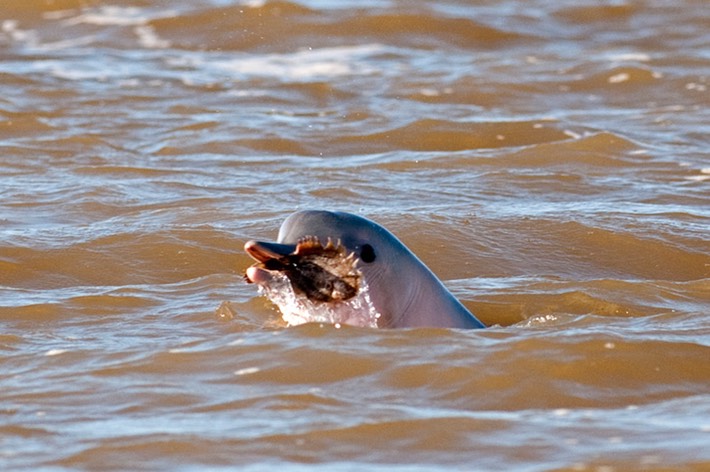
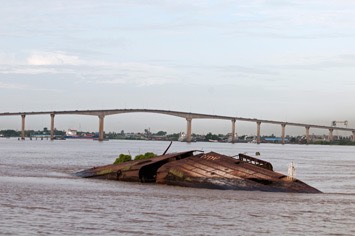
The old Fort Zeelandia guards the city’s approach from the river. Paramaribo's characteristic wooden houses have given the old city centre World Heritage Site status, but apparently their upkeep is very expensive these days and many houses are in a rather sorry state.
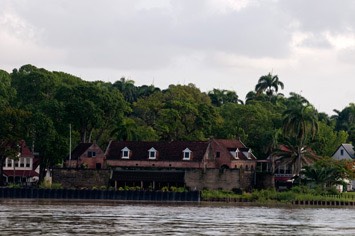
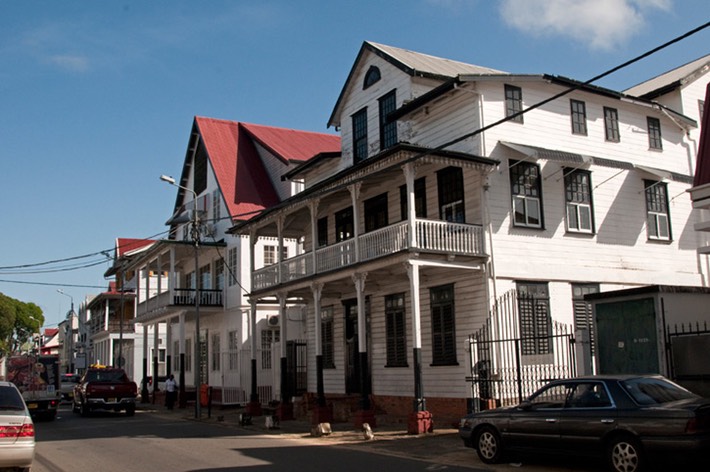
A monument outside the Congress building commemorates the five different ethnic groups in Suriname: the Amerindians (indigenous people), Dutch, Africans, Indians (locally referred to as Hindustanis) and the Javanese. The Amerindians are also represented on the country's coat of arms. Some amazingly carved wooden doors have been made by the maroons, descendants of runaway slaves, who still live a reclusive life in the wilds of the Surinamese jungle. The big clock tower still dates from the days of slavery, when all workers had to report for work punctually for fear of big trouble.
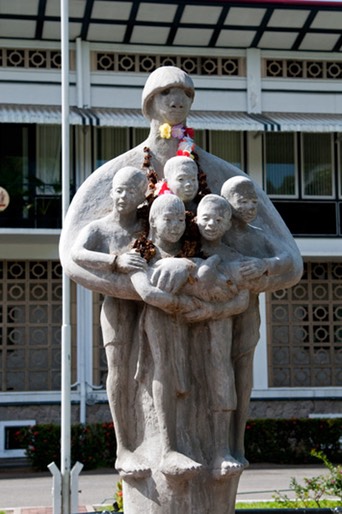
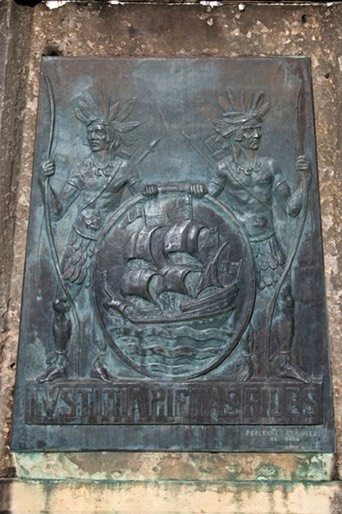
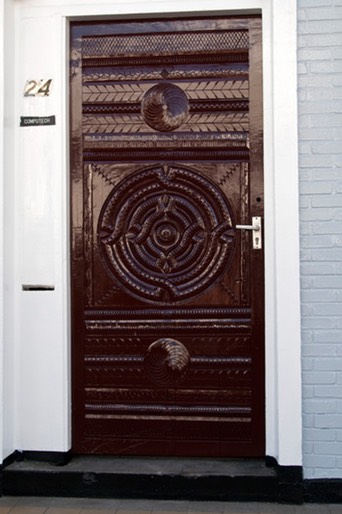
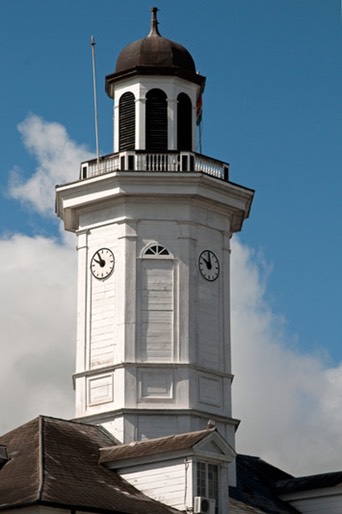
St. Peter and Paul’s Cathedral is one of the world’s largest freestanding wooden buildings (the actual record is contested by St. George’s Cathedral in Georgetown, Guyana). The interior is completely clad in wood, a rather unusual sight for a catholic church, but we found it very beautiful. Besides a number of churches there are also mosques, Hindu temples and synagogues. The multi-cultural society in Suriname seems to work pretty well - except at election times, we were told.
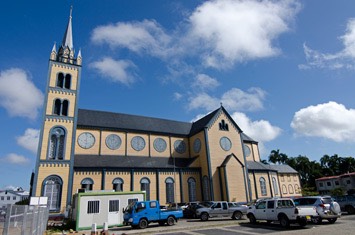
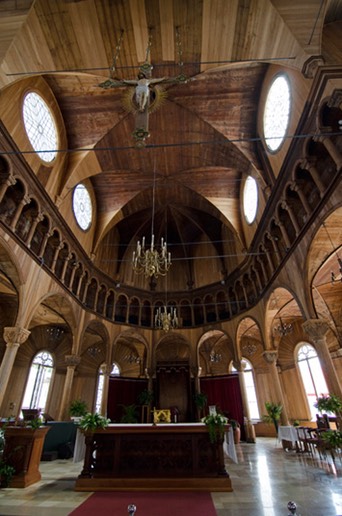
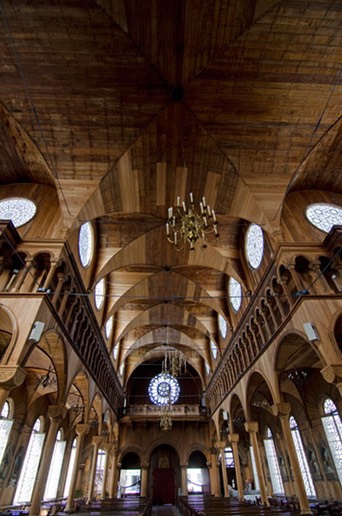
After the city tour we visited one of the old plantations on the other side of the Suriname River before flying over the border to Georgetown in Guyana. From the small aircraft we could see the extensive fields of sugar cane and learnt that the brown Demerara sugar comes from the cane fields around Georgetown, through which flows the Demerara River.
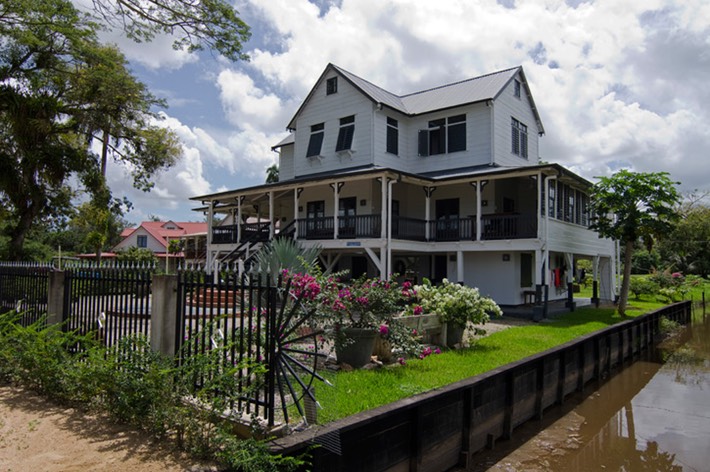
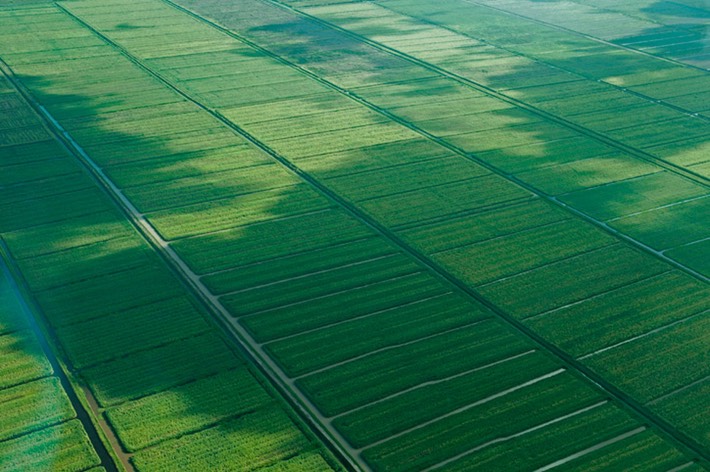
After one night in Georgetown we flew in a small Cessna Caravan to Mabaruma in the most northwesterly corner of the country. On our way we could marvel for the first time at the endless expanse of rainforest, which was only interrupted by the glittering water of wide rivers. The rivers form a transport network, and from Mabaruma we continued in a small boat to Shell Beach. Fortunately, our boat was not a traditional dugout canoe: it flew along, powered by a large outboard engine! Most people live along the rivers, and often the houses are built on stilts so that they don’t get flooded. At Shell Beach, which really is made up of nothing but shell fragments, we were surrounded by palm trees and could see how they sprout from a coconut.
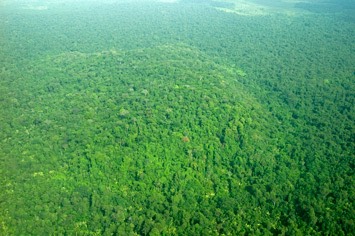
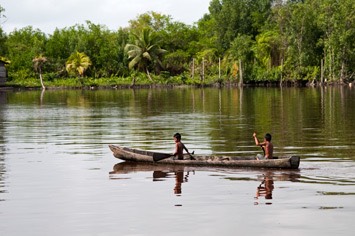
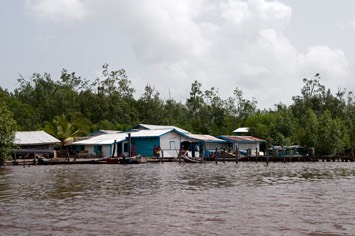
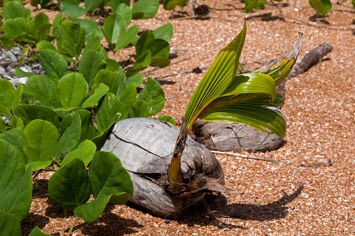
At Shell Beach, a group of dedicated conservationists, under the leadership of the 74-year old Audley (left), monitors the nesting turtles that lay their eggs on the beach. Five species of turtles nest at Shell Beach, but, when we visited, it was already the very end of the nesting season. Nevertheless we were lucky and privileged enough to be able to watch four big leatherback turtles laying eggs.
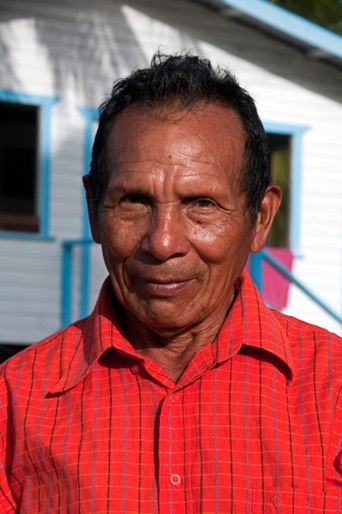
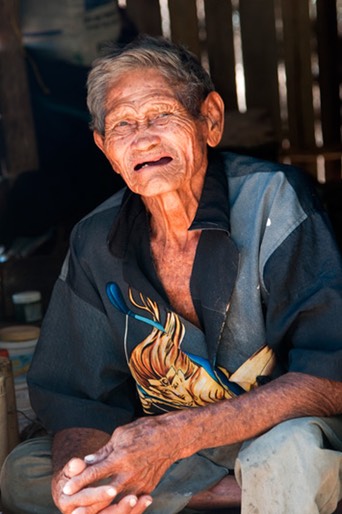
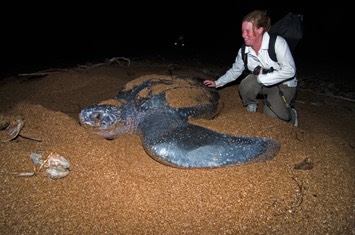
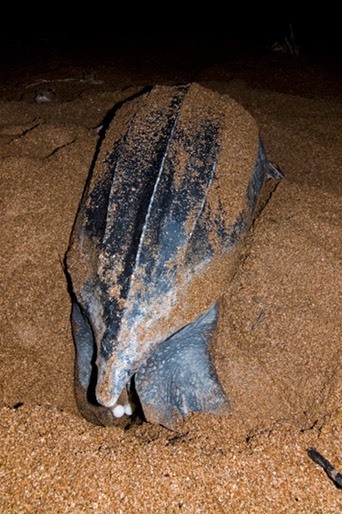
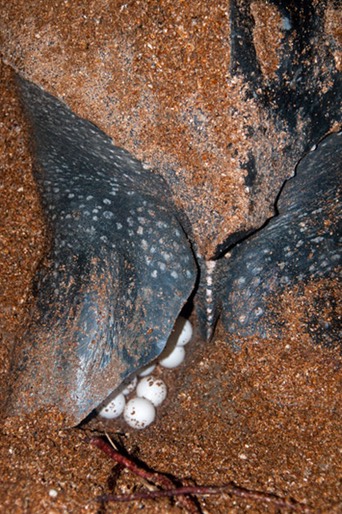
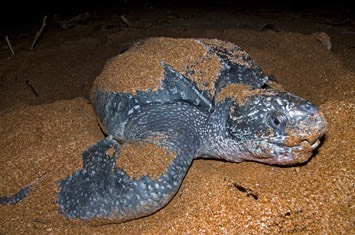
We returned from Mabaruma to enjoy a hot shower in Georgetown before heading into the deepest rainforest. We took another small plane to Annai, from where we were driven by car along Guyana’s main “highway” and over some quite rustic wooden bridges right into the Iwokrama forest reserve. There we spent two nights in the research centre, where we had an entire house on stilts all to ourselves!
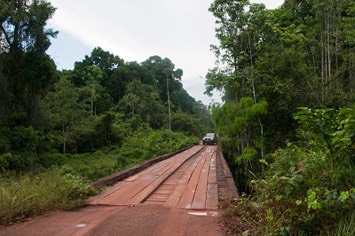
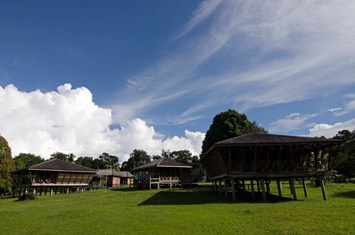
The next day we set off to conquer Turtle Mountain, which is only 300 m high, but given the heat and high humidity, we were already soaked with sweat before we even started the actual climb! But the view over the rainforest from the top was definitely worth the effort. We went on a couple of boat trips through flooded forests, through rapids and to see ancient petroglyphs on a rock. Along the way we would often come across small flocks of parrots.
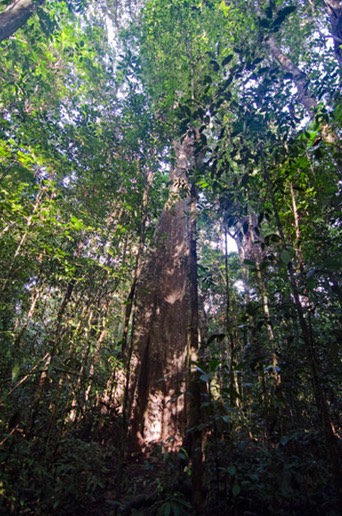
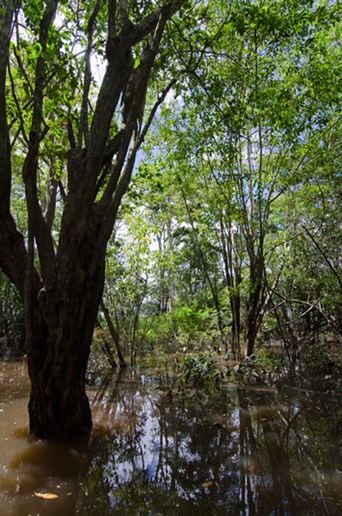
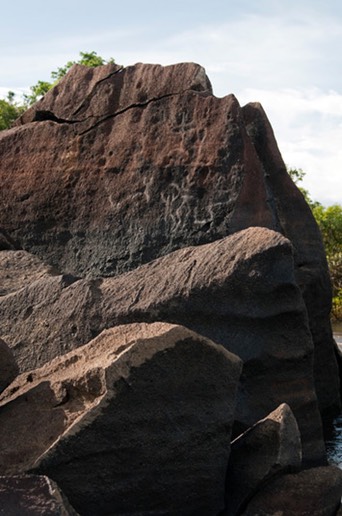
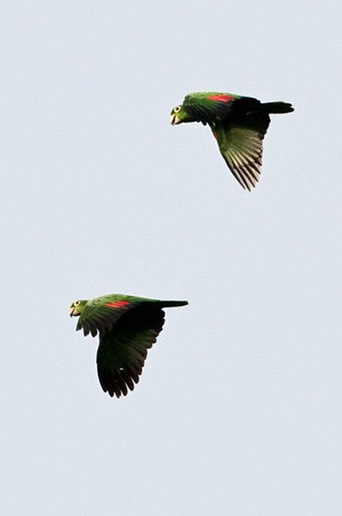
Our next station was Atta Lodge, which is located in a small clearing in the middle of the rainforest. We actually nearly didn’t make it to the lodge due to a rainforest roadblock! After a short walk we got there and after a brief rest headed straight out again for our first walk.
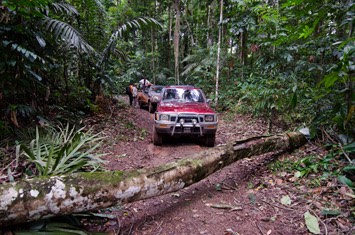
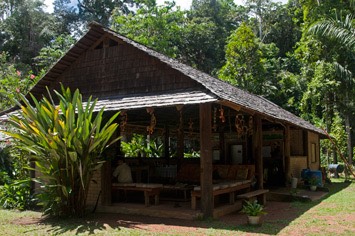
Our guide Cassius demonstrated the “talking trees”, which make a loud ringing sound when hit with another piece of hard wood. When we passed a certain tree on our way back from a walk, Cassius would always signal the two staff members in the lodge to expect us back in a few minutes. A family of black curassows lives near the lodge, and one brave member came to visit us on our last afternoon.
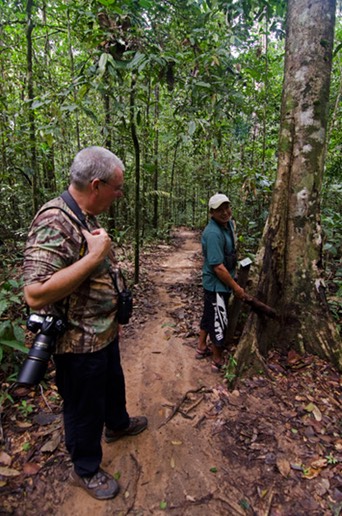
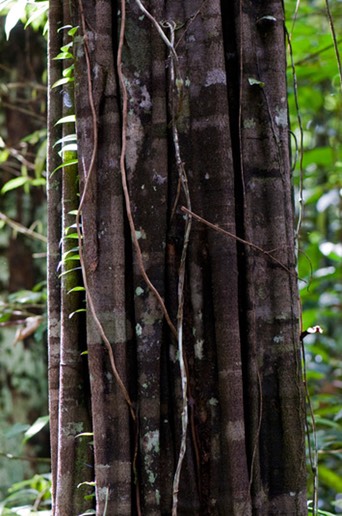
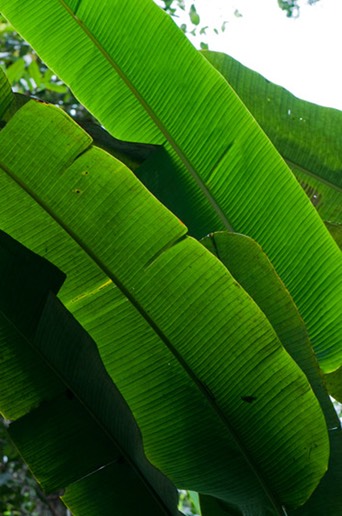
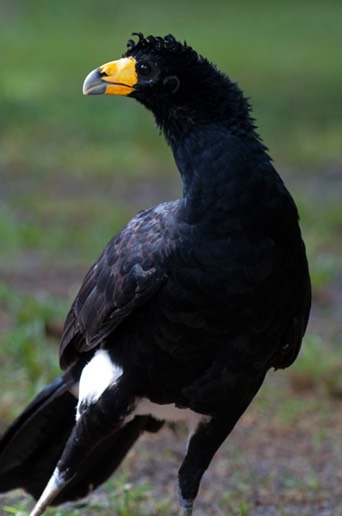
The highlight at Atta is the Canopy Walkway, which consists of several bridges connecting platforms high up in the trees. Everything is built and fixed to the trees in such a way that they can continue growing unharmed, but it allows visitors to walk some 30 m above the ground and come eye to eye with toucans, parrots and macaws. The bridges swing a bit, but the fixed platforms are great places to watch life in the rainforest go by. We spent several hours up in the canopy and could have been there even longer!
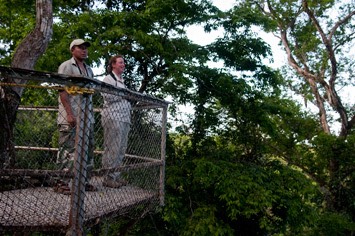
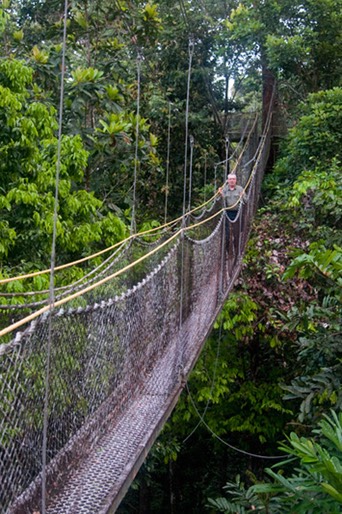
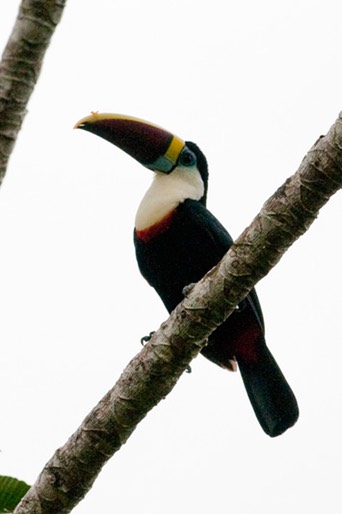
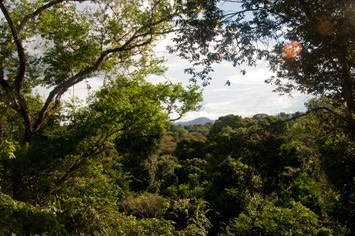
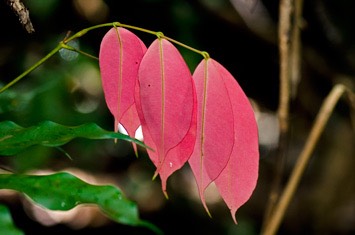
After two days in Atta we returned to Rock View Lodge near Annai, where we had arrived by plane a few days earlier. Rock View is run by a Brit, Colin Edwards, and his sons. Colin presides over lunch, cocktail hour and dinner and regales his guests with stories of his life and achievements, which his eldest son had no doubt heard countless times before! As we didn’t have much time, our guide Hendricks took us up a small hill (similar to Turtle Mountain), from which we had a spectacular view over the savannas of the Rupununi, which are partly flooded during the rainy season. During our walk we also managed to find some vampire bats and a poison arrow frog.
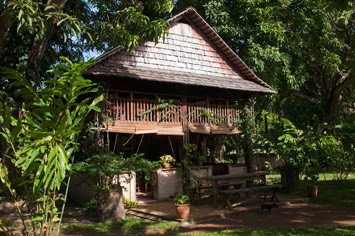
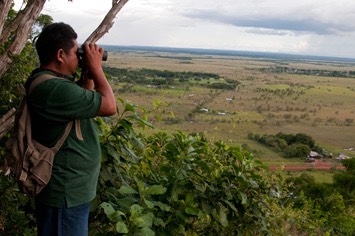
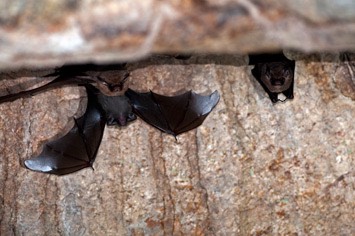
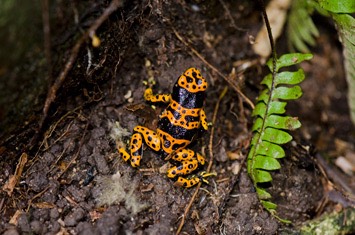
The arrival of a plane is the highlight of the day and everybody (even the horses) gather to check who is arriving. On our way back to Georgetown we first had to go even further south to the frontier town of Lethem. This gave us the opportunity to see the extensively flooded Rupununi savannas from the air.
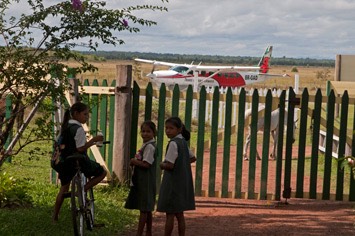
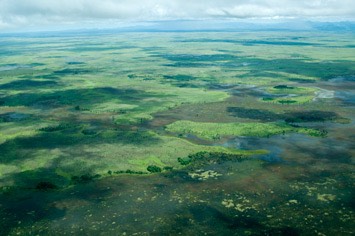
Each time we spent a night in Georgetown, we stayed at Cara Lodge, a splendid old building that dates from the colonial area. It has a cosy courtyard and the old traditional Demerara shutters. These are extended window sills, on which big lumps of ice were placed, so that the breeze blowing into the room brought in refreshingly cool air.
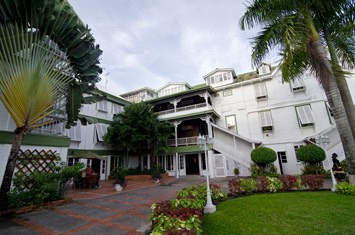
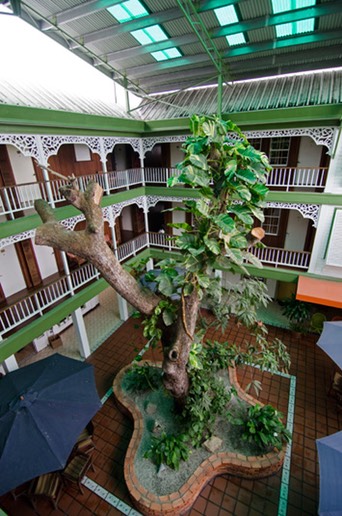
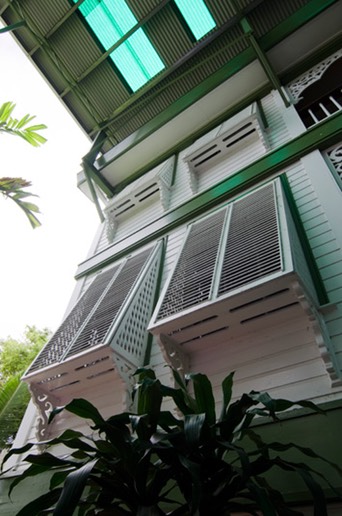
If you ask the people in Guyana about the tallest wooden church, the answer will obviously be St. George’s Cathedral in Georgetown! It is a very pretty church from the outside, but we weren’t quite so taken by the interior as we were by the cathedral in Paramaribo. During our city tour we got to see many buildings with an interesting history, but the most impressive was the Stabroek Market. In colonial times this was the place where slaves were sold. Nowadays you can buy pretty much everything except cars (and slaves) in this market, which is the reason that it is more commonly known as the “bizarre bazaar”. Much of the market is housed in one big building, which is partly built over the Demerara River, while other parts of the fish and vegetable market are under the open skies.
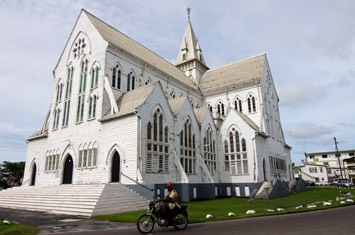
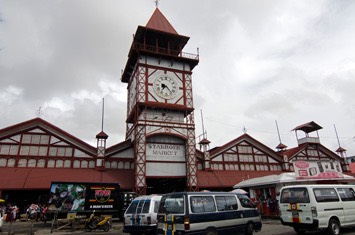
In the Stabroek Market one can buy packaged food items, spices, fruit and vegetables, fresh fish and meat, clothes, shoes, bags, jewelry and much, much more. All this is sold by numerous very charismatic salesmen and women. In the streets of Georgetown (and also in Paramaribo) we spotted men carrying small birds in cages. We were told that people “race” these birds every Saturday, meaning they compete against each other according to which bird can sing longer and better. The winners of these competitions can be worth over 1,000 US Dollars! That’s why the owners apparently treat their birds better than their wives and take them wherever they go. We even went on the plane with one of them! Anyway, Stabroek Market is the place to buy your bird, its cage and its food.
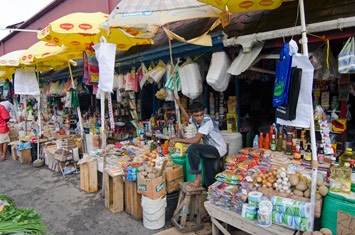
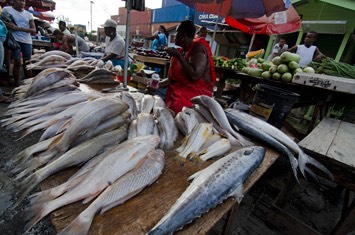
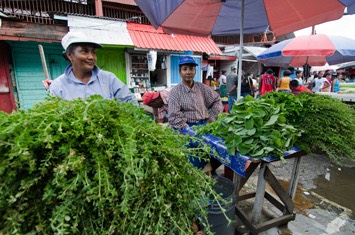
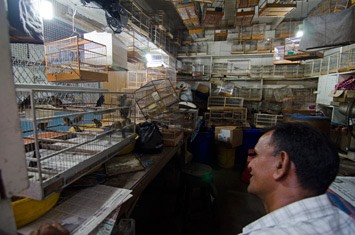
Last stop of the city tour was the Botanical Garden. They keep a dozen or so manatees in a large system of lakes in the park and we wanted to try and find one, as they are rather difficult to see in the wild. They eat vegetation, but we were rather surprised to see our guide, Luke, pull off some grass and proceed to feed the first manatee we found! It was even possible to touch them, which was rather exciting.
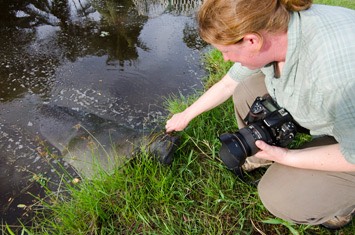
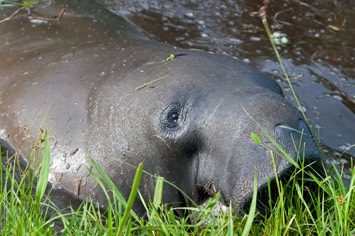
Our last stop on our Guyana trip was Kaieteur Falls in the far west of the country. We flew there in an ancient Britten-Norman Islander plane, which only had space for seven passengers, one of which (Mick was the lucky one!) had to sit in the co-pilot’s seat! The runway at the waterfall was right close to the edge of the gorge, so that we had an absolutely spectacular view from the air as we arrived. Apparently it had rained quite a bit and the Potaro River carried a lot of water, which all plummeted 220 metres deep into the gorge. We could hear the rushing of the water from a long way off, and woke up every morning in the safe knowledge that the waterfall was still there!
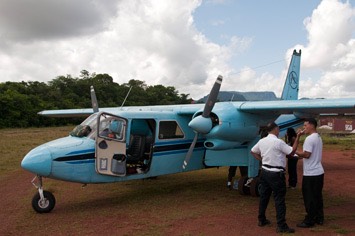
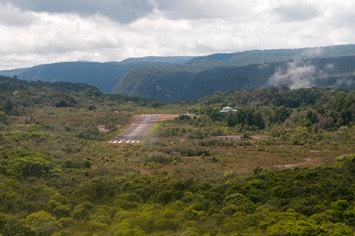
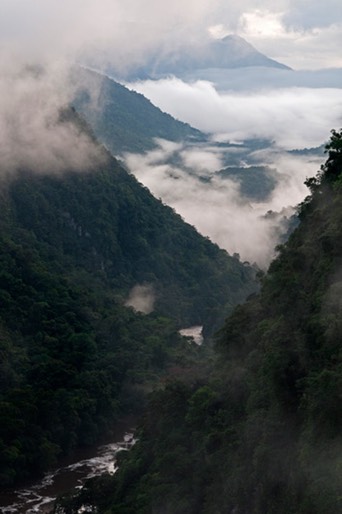
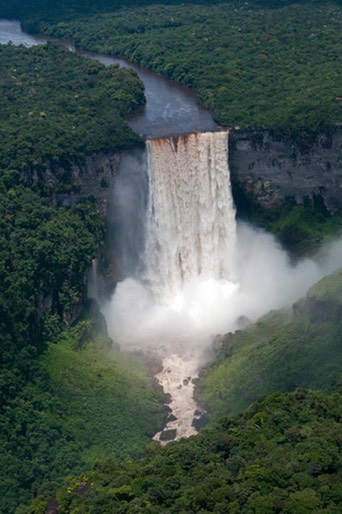
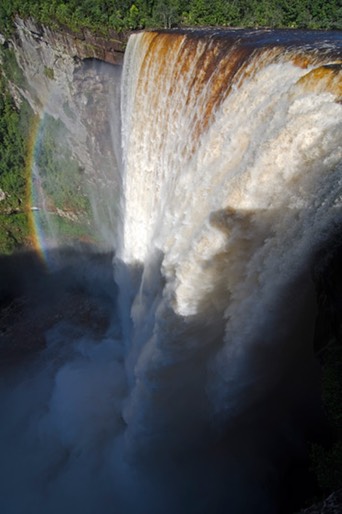
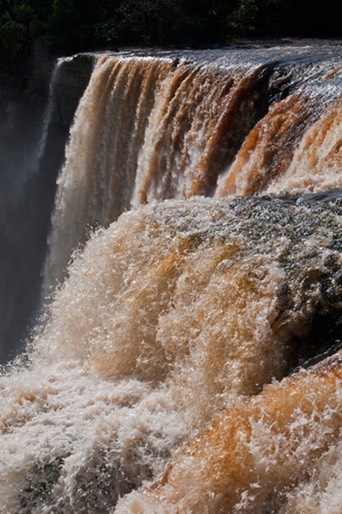
The incredible thing about staying at Kaieteur Falls was the fact that we had the entire area to ourselves, with the exception of about three hours every day. All other visitors only came on a day trip and never stayed longer than two hours. It was also rather amazing to be able to walk right up to the edge of the drop. There is a little overhang and we crawled right up to the very edge and peered more than 220 metres down to the bottom of the gorge. In the mornings and evenings we watched tens of thousands of swifts that roost behind the waterfall at night. In the evenings they “rained” out of the sky like missiles and then disappeared behind the gushing water until the next morning.
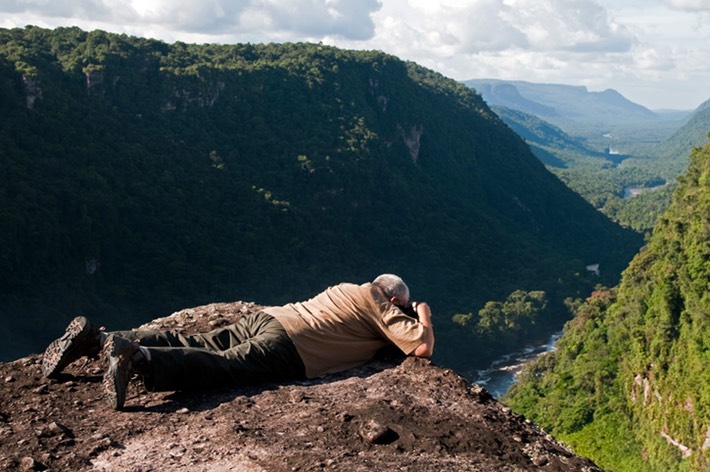
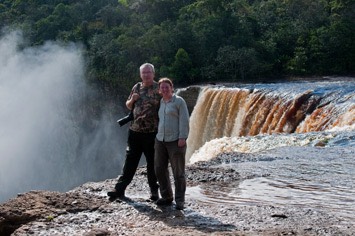
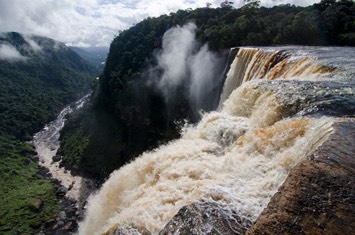
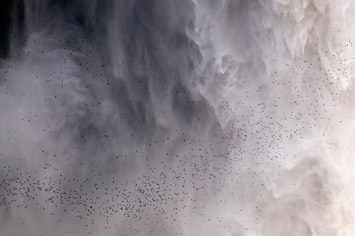
From Johnson’s Viewpoint we had the best vantage point to take in the entire waterfall, and it is the one viewpoint that all other tour groups don’t go to, as it is the furthest away. On our way we passed countless tank bromeliads (which can reach enormous sizes) and we stopped at pretty much every single one to look for the golden rocket frog, which only lives in this area and in this one species of bromeliad. They live in the small ponds that form between the leaves, which never dry out due to rain and the dew from the waterfall’s mist. Another highlight of our walks was to see several bright orange male cock-of-the-rocks, one of which posed long enough nearby to take a decent photo.
